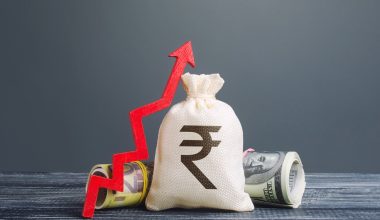There is a near consensus that the biggest threat to the ongoing global bull market will come from the return of inflation, which has been conspicuous by its absence in the developed world during the last 13 years. Lower than targeted inflation rates allowed the leading central banks, particularly the Fed, to implement unconventional monetary policy like Quantitative Easing following the Global Financial Crisis of 2008. Unprecedented liquidity infusion didn’t create consumer price inflation; instead it created ‘asset price inflation’ and booming stock markets. Inflation, persisting below the Fed’s target, allowed it to continue with low interest rates.
When the pandemic Covid-19 broke out triggering unprecedented lockdowns on a global scale, it was clear that it would lead to a massive global recession in 2020. Central banks across the world, led by the Fed and the ECB, started cutting rates and buying bonds in an unprecedented globally synchronized monetary stimulus. The balance sheet of the Fed expanded from $ 1 trillion in 2008 to $ 8 trillion now. This massive monetary stimulus, along with ambitious fiscal stimulus programs implemented by most countries, has played an important role in the ongoing global economic recovery. From the market perspective, it can be argued that this huge liquidity infusion and the consequent historically low interest rates are the major drivers of the present global stock market boom.
But, accommodative monetary policy and near zero interest rates cannot continue for long. It will lead to unintended consequences like formation of asset bubbles and their inevitable collapse, which will impact the real economy. So, withdrawing from the accommodative monetary stance, normalizing monetary policy and rebalancing balance sheets would be top priorities of central banks. The Fed had declared a glide path for normalization – raising rates starting early 2024. But now, it appears that inflation and the bond market would force the Fed and other central banks to advance the time line for rate hikes.
The CPE (Personal Consumption Expenditure) inflation in US has been steadily rising in recent months to touch 5 % in May. More importantly, core inflation has spiked to 3.8 %, way ahead of the Fed’s long-term target of 2%. Even if this high inflation is transient and not persistent as claimed by many economists, the fact is that inflation levels are way too high for comfort. Back home in India the latest CPI inflation print at 6.3 % has gone beyond the RBI’s upper band tolerance limit. More worrisome is the core inflation rate rising to 6.8 %.
From the market perspective, what is the important takeaway from these inflation data points? The Fed’s latest ‘mildly hawkish’ policy statement indicates that they will advance rate hikes to 2023. The market now expects the Fed to raise rates twice in 2023. Even though the Fed continues to buy bonds worth $120 billion a month, ‘tapering’ is not far away. In India, the RBI may not raise rates soon, but it is clear that rates have troughed and there is no room to persist with an accommodative policy and dovish stance for long. Bond yields have started rising sending signals to the stock market.
But the market may ignore these monetary signals if the signals from the real economy – growth and corporate earnings – are stronger. Corporate earnings have grown by 14 % in pandemic-hit FY 21. This is a 10-year high. Corporate earnings are likely to grow by around 35 % in FY 22. That is positive news indeed!








1 comment
dear team kindly provide july month geojit insight